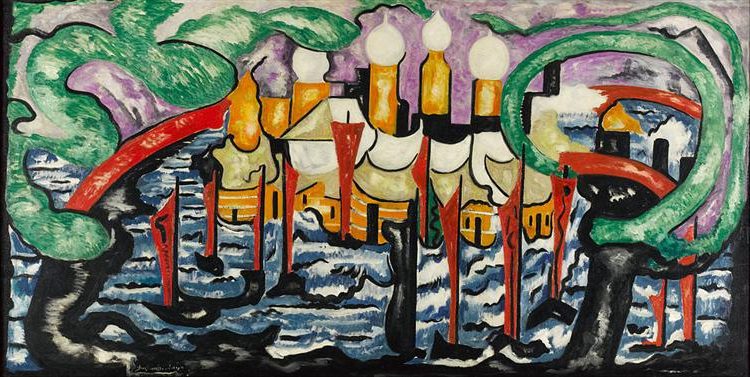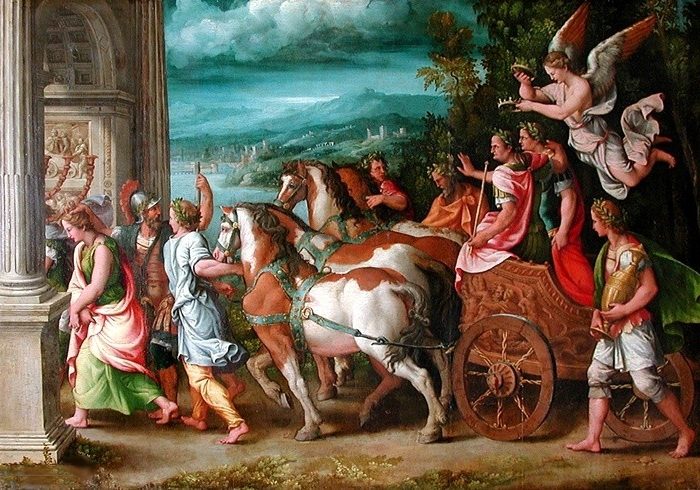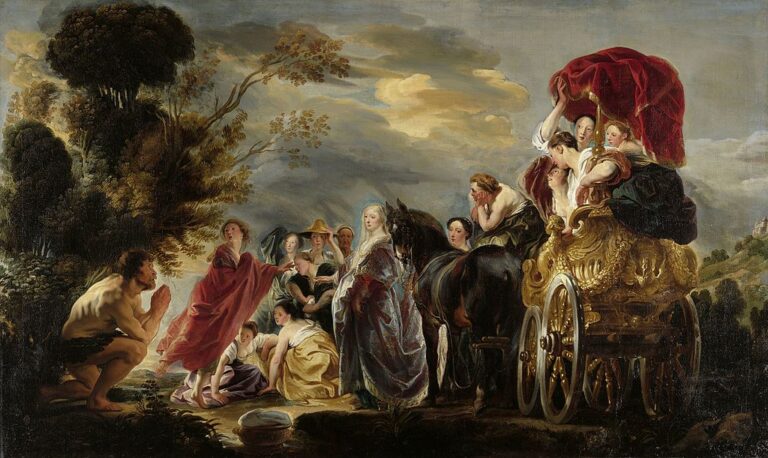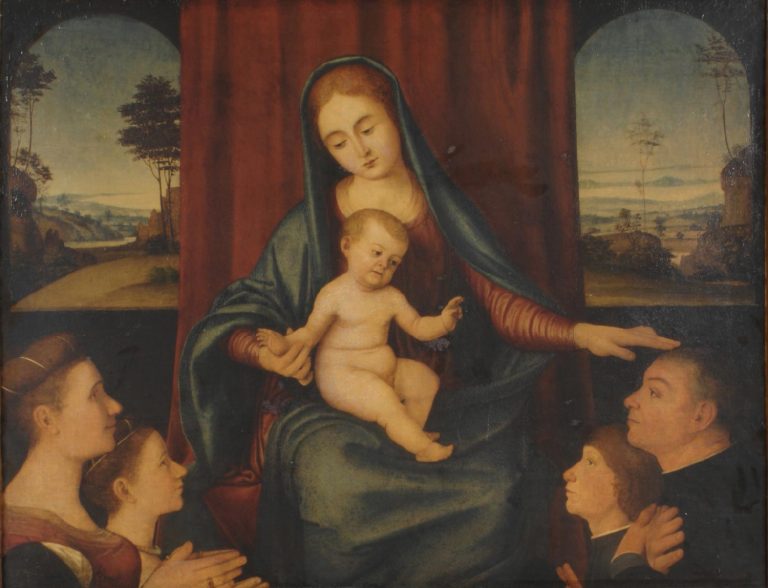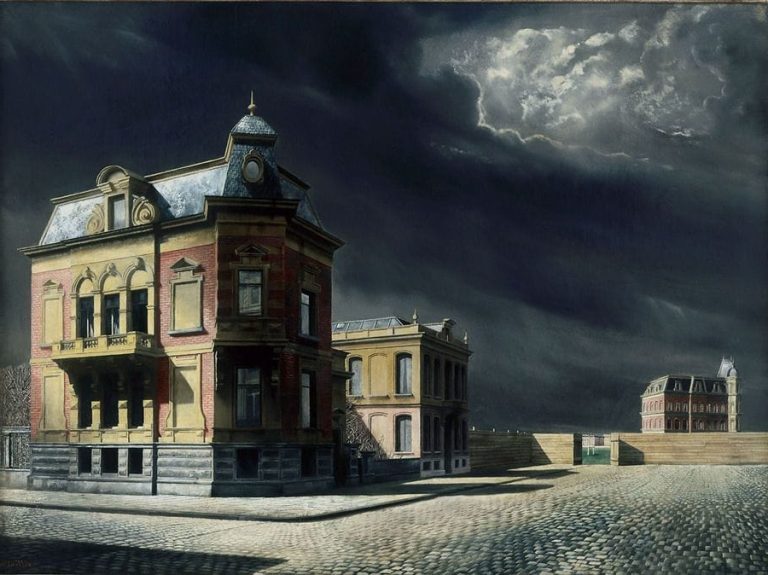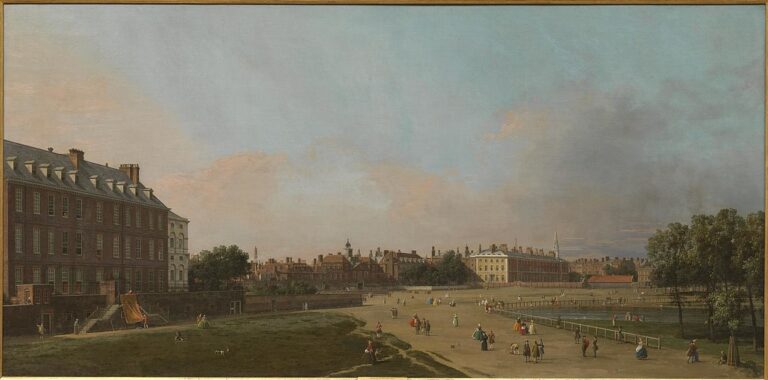Jacoba van Heemskerck: Pioneering Dutch Abstract Artist
Born: 1 April 1876, The Hague, Netherlands
Death: 2 August 1923, Domburg, Netherlands
Art Movement: Abstractionism
Nationality: Dutch
Teachers: Ferdinand Hart Nibbrig and Jan Toorop
Institution: Royal Academy of Art, The Hague
Jacoba van Heemskerck: Pioneering Dutch Abstract Artist
Life and Career
Jacoba van Heemskerck was a Dutch painter and graphic artist. She made significant contributions to modern art in the early 20th century. Her life and career were marked by artistic exploration, international connections, and a unique vision that blended various avant-garde influences.
Early Life and Education
Jacoba van Heemskerck was born in 1876 in The Hague, Netherlands. Her father, Jacob Eduard van Heemskerck van Beest, was a naval officer and painter. This artistic background likely influenced her early interest in art.

Landscape with a Sun (c. 1915) by Jacoba van Heemskerck
She began her formal art education at the Royal Academy of Art in The Hague. There, she learned traditional painting techniques and styles.
Later, van Heemskerck studied under Dutch painters Ferdinand Hart Nibbrig and Jan Toorop. These artists introduced her to new artistic approaches and modern styles.
Influence of Avant-Garde Movements
Van Heemskerck’s artistic style evolved as she encountered different avant-garde movements. She spent time in Paris studying with symbolist painter Eugène Carrière.
This experience exposed her to new ideas and techniques. It helped shape her unique artistic vision.
She became interested in Anthroposophy, a spiritual philosophy developed by Rudolf Steiner. This influenced her approach to color and form in her work.
Van Heemskerck’s paintings often featured abstract landscapes and still-lifes. She used bold lines and vibrant colors in her compositions.
Collaboration with Der Sturm
In 1913, van Heemskerck began working with Der Sturm, an influential German art gallery and magazine. This collaboration marked an important phase in her career.

Boat and Trees (1914) by Jacoba van Heemskerck van Beest
Der Sturm promoted avant-garde art and helped van Heemskerck gain international recognition. She exhibited her work alongside other prominent artists of the time.
Through Der Sturm, she connected with the broader European avant-garde art scene. This exposure further shaped her artistic development and style.
Van Heemskerck continued to create innovative artworks until her death in 1923. Her legacy as a pioneering Dutch modernist artist remains significant in art history.
Artistic Style and Themes
Jacoba van Heemskerck’s art evolved dramatically over her career. She moved from realistic paintings to bold, abstract works filled with vibrant colors and geometric shapes.
Development of a Unique Style
Van Heemskerck started with traditional landscape paintings. She then explored Luminism, using bright colors to capture light effects. Her style shifted towards Cubism, breaking forms into geometric shapes.
By 1913, she developed her signature abstract style. She used thick black lines to outline shapes. Bold colors filled the spaces between. Her paintings featured simple forms inspired by nature and architecture.
Van Heemskerck’s later works had a spiritual quality. She aimed to express inner experiences through color and form. Her abstract compositions evoked emotional and mystical themes.
Contributions to Modern Genres
Van Heemskerck made important contributions to modern art movements. Her early Luminist works helped advance Dutch modernism. She was part of the avant-garde Der Blaue Reiter group in Germany.
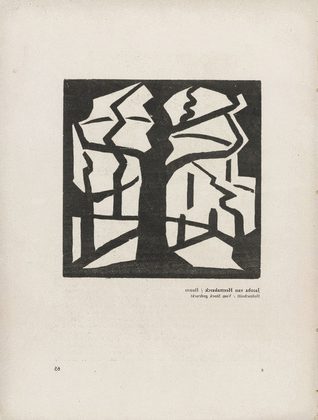

Her abstract paintings pushed boundaries in form and color. She created striking seascapes and landscapes with simplified shapes. Her still-life works transformed everyday objects into dynamic compositions.
Van Heemskerck also worked in other media. She designed colorful stained glass windows and mosaics. These pieces showcased her skill with color and geometric forms.
Spirituality in Art
Spiritual themes became central to Van Heemskerck’s work. She believed art could express higher truths and inner experiences. Her abstract forms aimed to capture unseen energies and forces.
Color played a key role in conveying spiritual ideas. She used bold, pure hues to create emotional impact. The interplay of colors in her work suggested harmony and balance.
Van Heemskerck’s glass art had strong spiritual elements. Her stained glass windows for churches combined religious symbols with abstract designs. These works merged her artistic vision with sacred spaces.
Legacy and Exhibitions
Jacoba van Heemskerck’s art gained recognition during her lifetime and continues to be celebrated today. Her works are displayed in major museums and have influenced many artists.

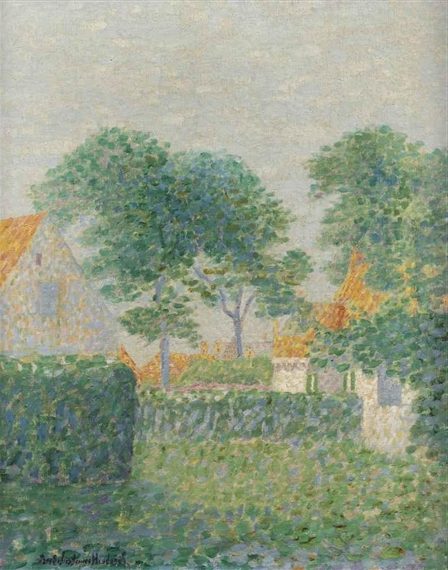
Prominent Displays and Collections
Van Heemskerck’s paintings and woodcuts are part of important collections worldwide. The Gemeentemuseum Den Haag (now Kunstmuseum Den Haag) held a big show of her work in 2005. This museum owns many of her pieces. The National Gallery of Art in Washington D.C. also has some of her art.
In 2021, the exhibition “Jacoba van Heemskerck: Truly Modern” took place. It showed how ahead of her time she was. Her bold use of color and strong lines still look fresh today.
Influence on Dutch and Global Art
Van Heemskerck’s style made a mark on Dutch modern art. She was part of the art scene in Domburg, a place that drew many artists. Her work was shown in Berlin at Der Sturm gallery, run by Herwarth Walden. This helped spread her ideas to a wider audience.

Sailboats by Jacoba van Heemskerck
She took part in the Erster Deutscher Herbstsalon in 1913. This big art show in Berlin put her next to other leading modern artists. Van Heemskerck’s friend Marie Tak van Poortvliet was a key supporter. She collected van Heemskerck’s work and helped promote it.
Frequently Asked Questions
Jacoba van Heemskerck was a key figure in early 20th century Dutch modern art. Her work spanned painting, woodcuts, and stained glass design.
What are the notable works of Jacoba van Heemskerck?
Van Heemskerck created many abstract landscapes and still-life paintings. Her works often featured bold colors and strong lines.
One of her well-known pieces is “Composition No. 4” from 1917. It shows her shift towards more geometric forms.
How did Jacoba van Heemskerck contribute to modern art?
Van Heemskerck helped push Dutch art in new directions. She moved from Luminism to Cubism and then to abstraction.
Her use of color and form was innovative for the time. She was part of the avant-garde movement in the Netherlands.
What was Jacoba van Heemskerck’s style and technique in painting?
Van Heemskerck used bright colors and black outlines in her work. She focused on creating rhythm in her compositions.
Her style evolved from early realistic paintings to more abstract forms. She often used geometric shapes in her later works.
How did the Expressionist movement influence Jacoba van Heemskerck’s work?
Expressionism shaped Van Heemskerck’s art greatly. She used bold colors to convey emotions and inner experiences.
Her work became less about exact representation and more about expressing feelings through color and form.
What role did Jacoba van Heemskerck play in the ‘Degenerate Art’ exhibition?
There is no evidence that Van Heemskerck’s work was part of the ‘Degenerate Art’ exhibition. This event took place in Nazi Germany in 1937, after her death in 1923.
What were the key themes depicted in Jacoba van Heemskerck’s paintings?
Van Heemskerck often painted landscapes, cityscapes, and harbor scenes. She was inspired by nature and urban environments.
Her work also explored spiritual and theosophical ideas. This led to more abstract compositions in her later career.

